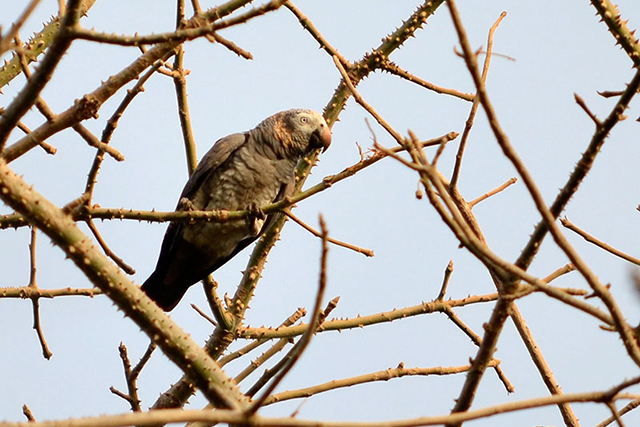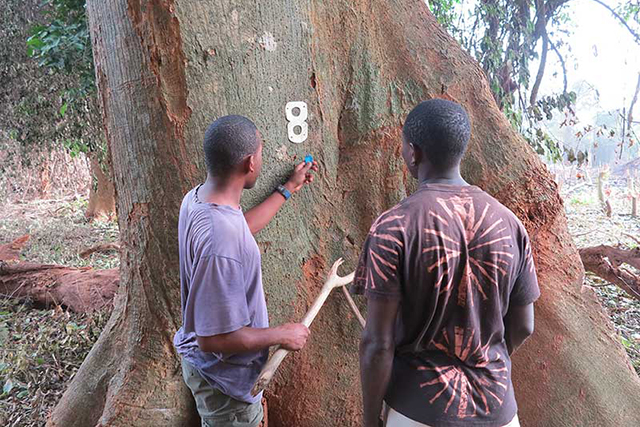Timneh parrots have long been subject to high levels of trapping for the pet trade, leading to dramatic declines in populations. They are restricted to western areas of the moist Upper Guinea forests and bordering savannas, from the Bijagós islands of Guinea-Bissau eastwards through southern Guinea, Sierra Leone, Liberia and Côte d’Ivoire. Loss of forest in these areas has compounded the impact of trade, leading to the fragmentation of existing populations. In 2012, concerns over declining populations prompted their addition to the IUCN Red-List of Threatened Species.

Although no exports of wild Timneh parrots are currently permitted under CITES, trapping for the international trade continues. There is a need to protect known breeding populations, create conditions for the effective enforcement of wildlife trade laws, and generate knowledge on the status of wild populations.
Taking Action
WPT is collaborating with local and international organisations to implement a multi-faceted approach to address threats to this species. Nest protection, monitoring and surveys are being undertaken in the Bijagós islands UNESCO Biosphere reserve in Guinea-Bissau. Efforts are largely focused on João Vieira – Poilão National Park, a critically important breeding area. Local people are being involved in the birds’ protection, with former parrot poachers employed to monitor nests. Other islands within the Biosphere reserve are being visited to determine population status, the scale of trapping and the existence of other breeding areas. These activities are not only reducing poaching but also generating data on the basic biology of Timneh parrots and the status of lesser-known populations in Guinea-Bissau. This information will improve the scientific basis for conservation actions and feed into global assessments of the status of the species. Field work in Guinea-Bissau is being implemented by IBAP (National Institute for Biodiversity and Protected Areas in Guinea-Bissau) in collaboration with researchers from (ISPA – Instituto Universitário, Portugal).

WPT is also working to reduce demand for Timneh parrots in numerous ways, through raising awareness of the plight of Timneh parrots, supporting organisations that are working to enforce wildlife trade laws, and seeking an end to legal trade in closely related Grey parrots. In West Africa, WPT is supporting the work of WCP (Wara Conservation Project) to reduce the parrot trade in key regional trade hubs, Working closely with government ministries and law enforcement authorities WCP conduct investigations, facilitate the confiscation of illegally traded birds and ensure the prosecution of offenders. WPT is working with WCP to develop approaches for managing confiscated birds and identifying suitable locations for their release back into the wild. In early 2013 WPT sent veterinarian Dr. Davide de Guz to care for thirteen Timneh parrots confiscated as a result of WCP’s GALF (Guinea Application of Wildlife Law) project.

Many components of this work have been made possible through the support of Save Our Species a joint initiative of IUCN, the Global Environment Facility and the World Bank supported by the Fonds français pour l’environnement mondial (FFEM). Its objective is to ensure the long-term survival of threatened wildlife, their habitats and the people who depend on them. Additional support has been provided by the Keith Ewart Charitable Trust, the Bridging Peace Foundation, the Isdell Family Foundation, the Folk Peterson Foundation and the kind donations of many WPT members.
































